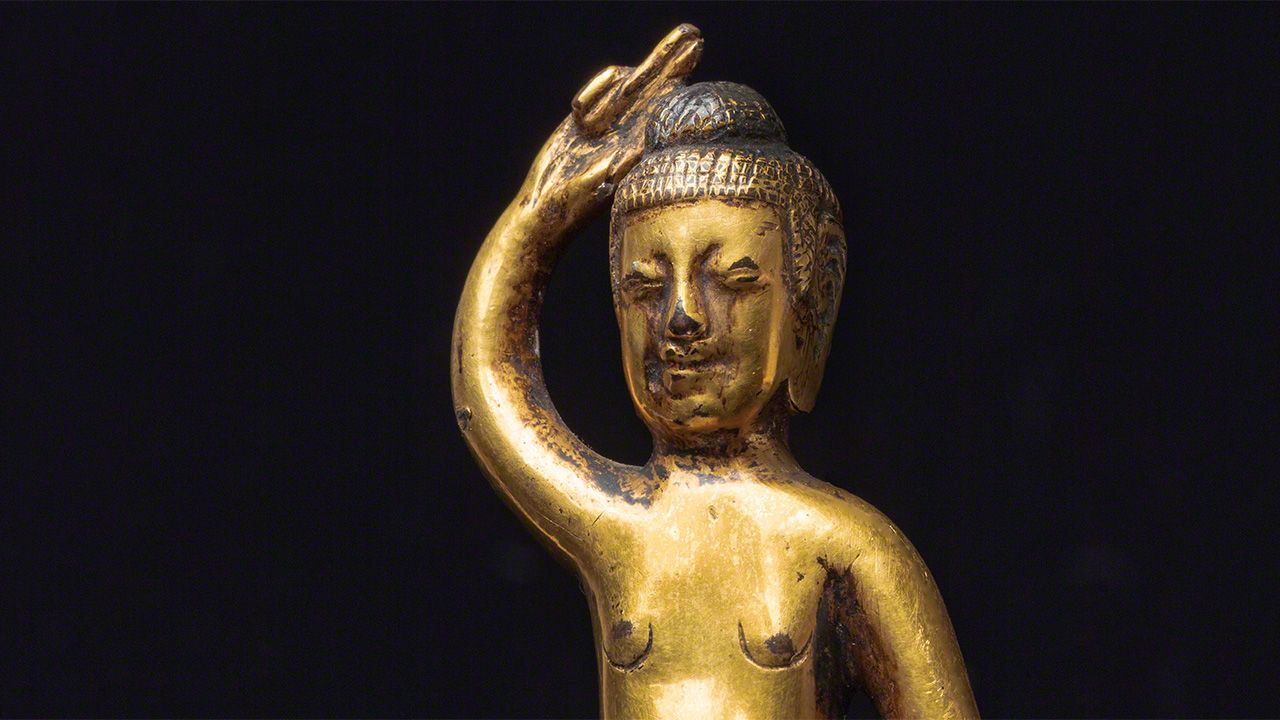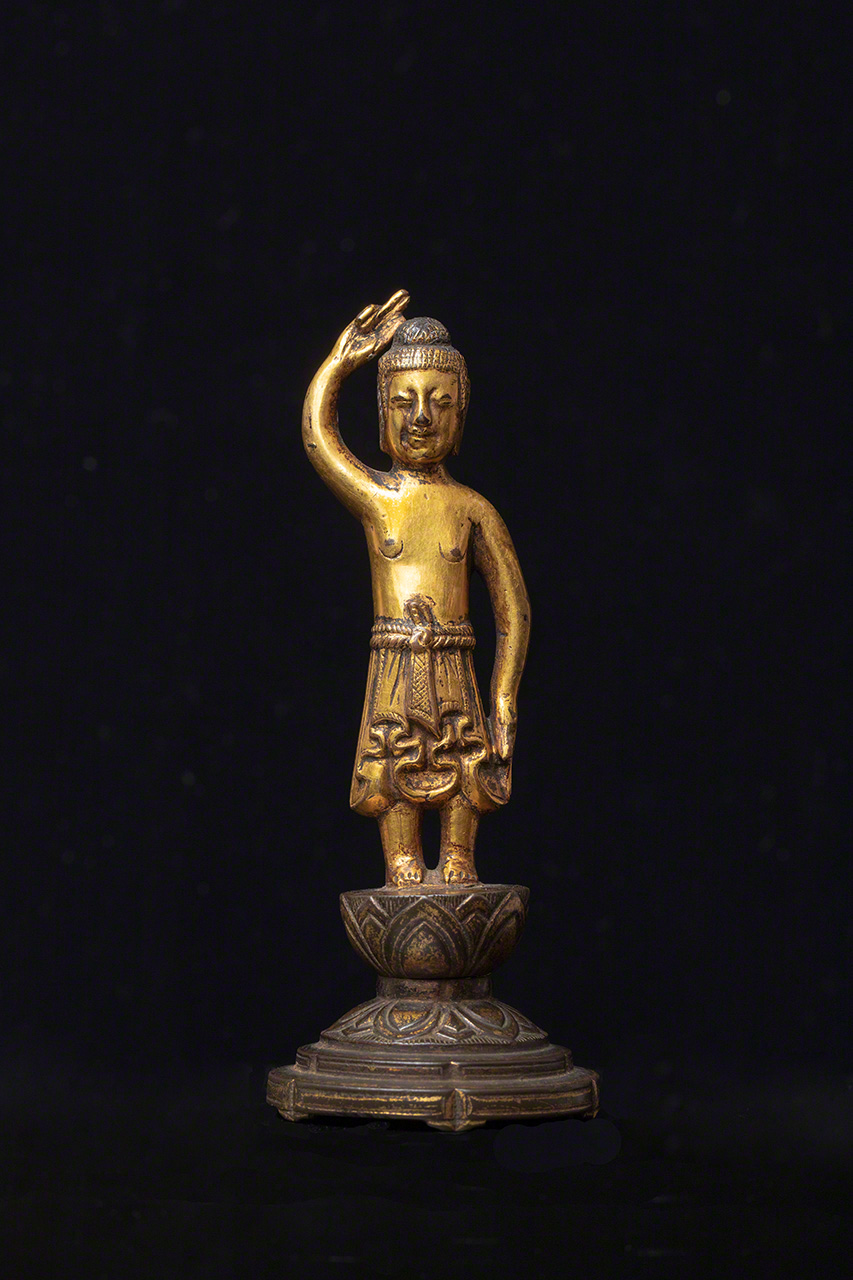
Bronze Standing Statue of the Shaka Buddha at Birth
Culture Art Guide to Japan- English
- 日本語
- 简体字
- 繁體字
- Français
- Español
- العربية
- Русский
A Diminutive Piece Depicts the Dawn of Buddhism
This image depicts the dramatic moments that followed the Buddha’s birth.
Around 2,500 years ago, Siddhartha Gautama was born into a princely family of the Shakya clan on the upper reaches of the Ganges in northeast India (Lumbini, where he was born, now lies over the border in Nepal). Emerging from the side of his mother, Maya, as she rested under a sal tree, he is said to have walked seven steps, lotuses bursting into bloom beneath his feet, before raising his right hand to the sky and lowering his left to the earth and declaring: “I alone am honored in the heavens and on earth.”
This sculpture belongs to a genre of images depicting the Buddha’s birth. These are especially revered during the festival of the Buddha’s birthday, marked in Japan on April 8 each year as Kanbutsu-e or hana-matsuri (flower festival). Legends narrate that the dragon god caused sweet dew or amrita, the immortality-giving ambrosia of the gods, to fall on the spot where he was born, and this is commemorated by sprinkling scented water or amacha (sweet tea) over an image of the newborn Buddha.

(© Muda Tomohiro)
This small gilt-bronze statue of the Buddha at the moment of his birth belongs to the temple Shōgenji in Komaki, Aichi Prefecture. Less than 10 centimeters in height, the image was cast in bronze and then finished with a layer of gold. The somewhat elongated face is marked by an expression known as the “enigmatic smile,” a characteristic of Buddhist images dating to before the Nara Period (710–94). It is believed that this image too was made in the sixth or seventh century, not long after the arrival of Buddhism in Japan.
On the back of the head is a hozo or tenon, which would have been used to attach the image to a halo-like aureola. The Buddha wears a skirt-like garment called a mo tied at the waist, the lines and folds of the fabric forming a symmetrical pattern. The same style is found in the much larger images at Hōryūji temple in Nara, making it likely that this is the oldest surviving image of Shakyamuni’s birth made in Japan. The sculpture’s energetic depiction of new life is an evocative reminder of a time when the newly imported religion was itself still in the first vigorous flush of youth in this country.
Maya died just a week after giving birth to her son. The world-changing life of the Buddha had just begun.

(© Muda Tomohiro)
Bronze Standing Statue of the Shaka Buddha at Birth
- Height: 8.3 cm
- Date: Asuka Period (593–710)
- Shōgenji (Komaki, Aichi Prefecture)
- On long-term loan to the Nara National Museum (visitors wishing to view it should confirm whether it is on display in advance)
- Important Cultural Property
(Originally published in Japanese. Banner photo: Bronze standing sculpture of Shakyamuni at birth, currently on display at the Nara National Museum. © Muda Tomohiro.)